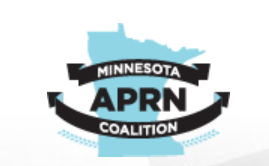Bill 511 Minnesota Senate Health Human Services Housing Committee

Progress and hope can be found occasionally in the system as this past Monday,
the Minnesota Senate Health Human Services and Housing Committee heard the Senate Bill 511 (SF 511), and approved it to be included in the Omnibus bill for future consideration by the Legislative body.
-
This bill is written with the intention and desire to improve access to health care for the public,
-
and to remove barriers that limit the Advanced Practice Nurses (APRNs) in practicing to the full extent of their training and experience level.
The bill is supportive of adopting the National Consensus Model for the APRN as recommended by both the Institute of Medicine (IOM) and also the MN Governors Task Force on Health Care. This bill supports removing the need for a written prescribing agreement between an APRN and a physician (many not on the premises).
This bill does not eliminate the need for collaboration and/or a team approach in the provision of care, but it removes the need for an unnecessary written agreement between the health care providers. It seems strange to require the APRNS to have a written agreement with the physicians where as there are no written agreements with the other members of the health care team—such as the physical therapists, occupational therapists, licensed psychologists, etc.
Again, the concept of team care and collaboration is still alive and well within the bill, but it can be accomplished without the need for a restrictive practice requirement. This progress is a small, yet vital step for expansion of the roles that APRN’s participate in towards increasing the reach and effectiveness of today’s graduate-educated nurses.
MN has a total of 6287 APRN’s
NP: 3747
CRNA: 1730
CNS: 540
CNM: 270
Senate Bill 511 Facts surrounding this legislation:
• The 2010 Institute of Medicine (IOM) report, The Future of Nursing recommends that states enact the
national APRN Consensus Model. The interdisciplinary IOM panel included physicians, nurses, and other health policy experts.
• The Governor’s 2012 Health Reform Task Force also recommends enacting the APRN Consensus Model to increase consumer access to safe, high-quality, cost-effective primary care.
• Eighteen states and D.C. already grant full authority for APRN practice without physician oversight.
• The American Medical Association predicts a national shortage of 91,000 primary care physicians by 2020.
• Many Minnesotans lack access to primary care and mental health services. Our aging of population and implementation of the Affordable Care Act will further challenge Minnesota’s demand for health care.
• “The patient-centered nature of nurse practitioner training, which often includes care coordination and sensitivity to the impact on health of social and cultural factors, such as environment and family situation, makes NPs particularly well prepared for and interested in providing primary care” (Health Affairs Policy Brief, 10-25-12, p. 2 of 4).
• Nurse midwife patients have a significantly lower rate of cesarean births (13.8% vs. national average of 32.8%) and preterm births (2.3% v. national average of 11.99%). Nurse midwives already have independent prescriptive and collaborative agreements.
• Forty-five counties in Minnesota rely solely on registered nurse anesthetists to provide anesthesia services (based on 2009 report).
• Clinical nurse specialists in acute care settings reduce the cost of care and length of patients’
hospital stay.
Please forward this on to anyone that is impacted by this positive move to better consumers lives through up to date business practices that improve access, education, and patient outcomes.


